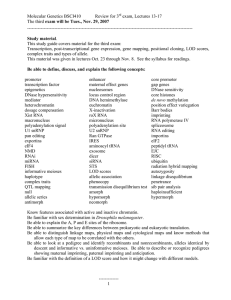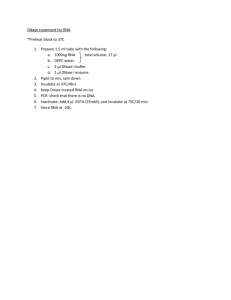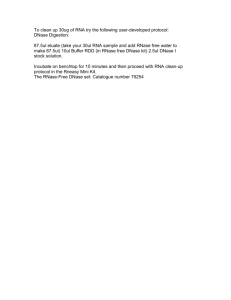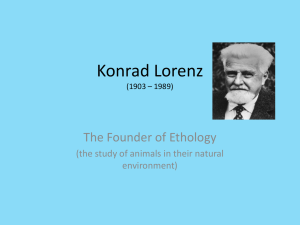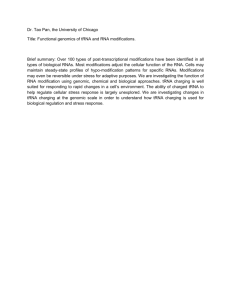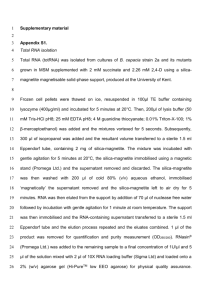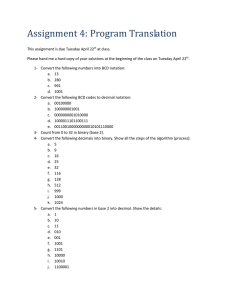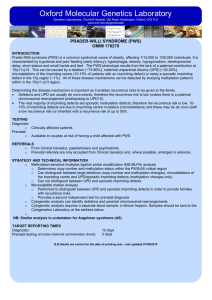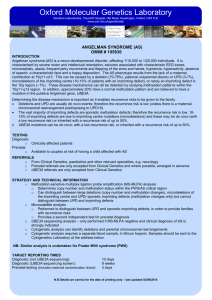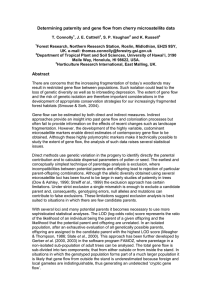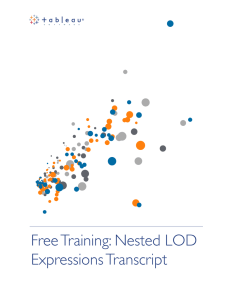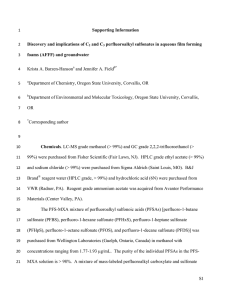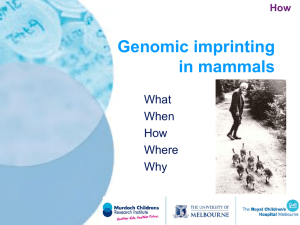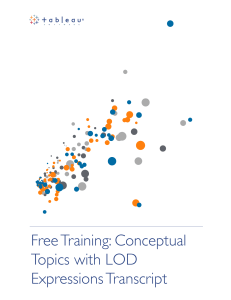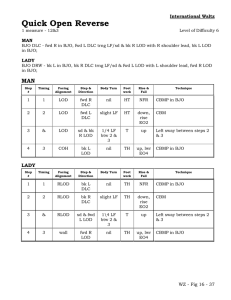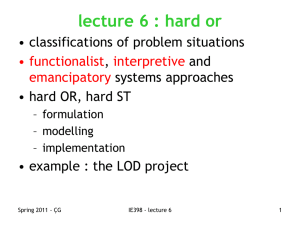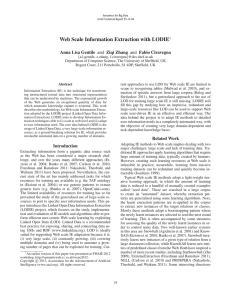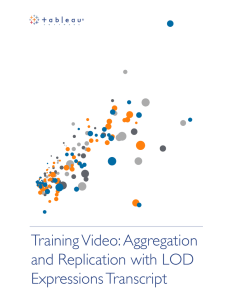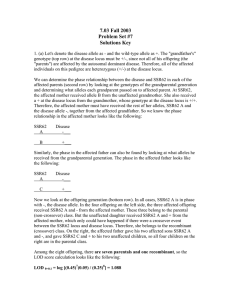Molecular Genetics BSCI410 answer questions like those on the homework.
advertisement
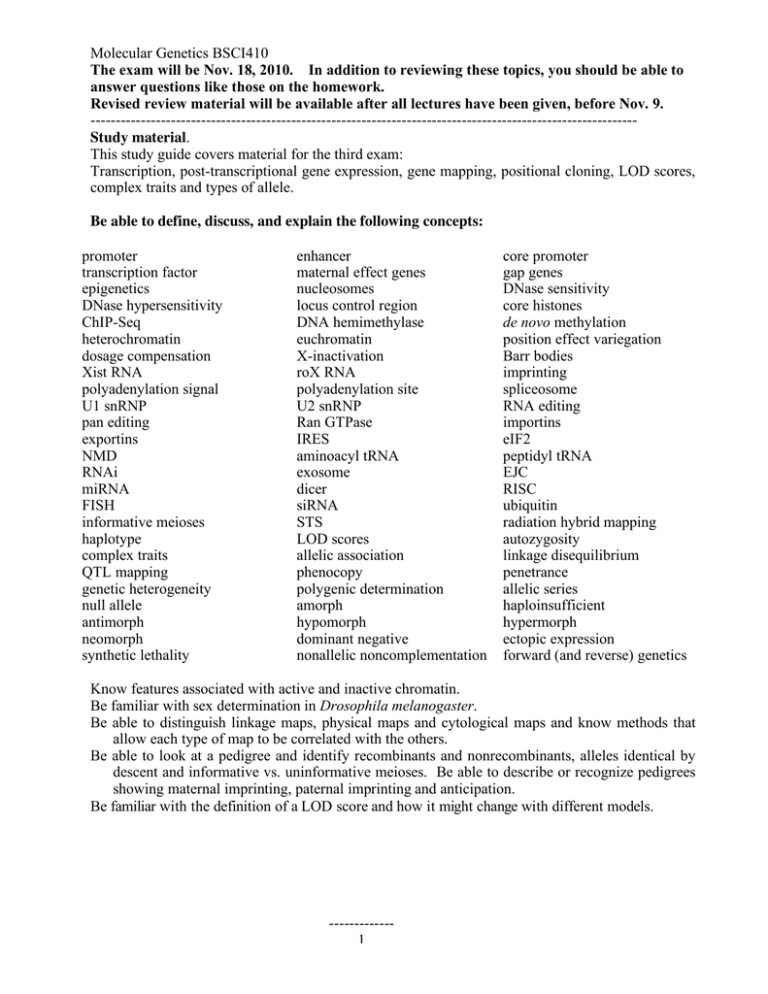
Molecular Genetics BSCI410 The exam will be Nov. 18, 2010. In addition to reviewing these topics, you should be able to answer questions like those on the homework. Revised review material will be available after all lectures have been given, before Nov. 9. ------------------------------------------------------------------------------------------------------------Study material. This study guide covers material for the third exam: Transcription, post-transcriptional gene expression, gene mapping, positional cloning, LOD scores, complex traits and types of allele. Be able to define, discuss, and explain the following concepts: promoter transcription factor epigenetics DNase hypersensitivity ChIP-Seq heterochromatin dosage compensation Xist RNA polyadenylation signal U1 snRNP pan editing exportins NMD RNAi miRNA FISH informative meioses haplotype complex traits QTL mapping genetic heterogeneity null allele antimorph neomorph synthetic lethality enhancer maternal effect genes nucleosomes locus control region DNA hemimethylase euchromatin X-inactivation roX RNA polyadenylation site U2 snRNP Ran GTPase IRES aminoacyl tRNA exosome dicer siRNA STS LOD scores allelic association phenocopy polygenic determination amorph hypomorph dominant negative nonallelic noncomplementation core promoter gap genes DNase sensitivity core histones de novo methylation position effect variegation Barr bodies imprinting spliceosome RNA editing importins eIF2 peptidyl tRNA EJC RISC ubiquitin radiation hybrid mapping autozygosity linkage disequilibrium penetrance allelic series haploinsufficient hypermorph ectopic expression forward (and reverse) genetics Know features associated with active and inactive chromatin. Be familiar with sex determination in Drosophila melanogaster. Be able to distinguish linkage maps, physical maps and cytological maps and know methods that allow each type of map to be correlated with the others. Be able to look at a pedigree and identify recombinants and nonrecombinants, alleles identical by descent and informative vs. uninformative meioses. Be able to describe or recognize pedigrees showing maternal imprinting, paternal imprinting and anticipation. Be familiar with the definition of a LOD score and how it might change with different models. ------------1
